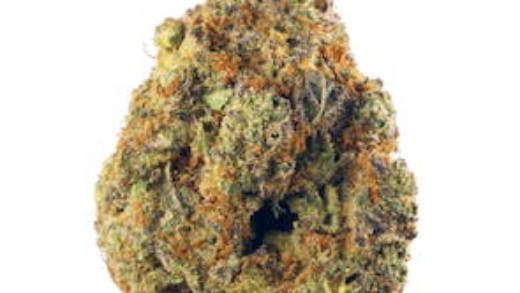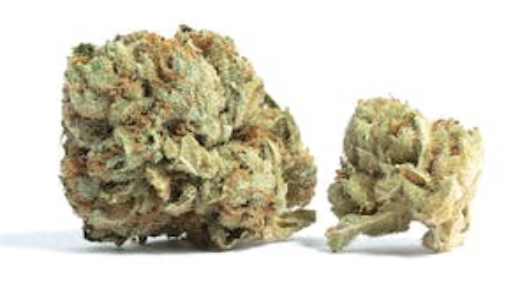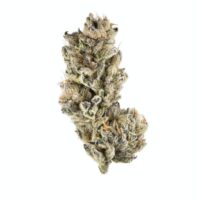How to germinate cannabis seeds
CANNABIS SEEDS AVAILABLE TODAY ARE OF 4 BASIC TYPES:
1.NATURAL– produce separate male and female plants. Space mother natures original seeds. natural or regular seeds require 11 to 12 hours of light and 11 to 12 hours of darkness daily to flower.
2.FEMINIZED– produce 99+ percent female plants. No male plants, male flowers occasionally occur. Female only plants were the first developed in India in 1982.**
feminized seeds require 12 hours of light and 12 hours of darkness daily to flower. All regular seeds can be feminized.
3.AUTOFLOWERING– ready for harvest 70 to 80 days after germination.seeds contain C. Ruderalis genes mixed with Indica and or sativa genes. auto flowering seeds flower regardless of light regimen.
Feminized seeds have been very popular in Europe since 2008 with the introduction of “lowryder 11” genetics. before they were considered a novelty.New auto flowering very varieties are growing 3 to 4 feet tall. Super auto flowering varieties are growing 6 to 7 feet tall.
4.AUTOFLOWERING FEMINIZED- produce 99+ percent female plants that flower and are ready for harvest 70 to 110 days after seed germination.seeds contain C.ruderalis genetics mixed with Indica and sativa genetics.
auto flowering feminized varieties flower after 3 to 4 weeks of growth, regardless of light regimen.
Super auto flowering feminized varieties flower after 4 to 5 weeks of growth.
They grow longer and bigger.
F1 hybrid seeds have hybrid vigor.F1 hybrid grow faster and bigger than seeds of non-F1 hybrids.
Find the Best Cannabis Seeds Here
Seed type advantages and disadvantages
| Seed | Advantages | Disadvantages |
| reg seeds | F1 hybrid vigor | not F1 hybrids – less vigor |
| no diseases | slow to start | |
| easy transport | moisture/heat sensitive | |
| small | easy to lose | |
| genetic expression | must cull males | |
| Feminized seeds | F1 hybrid vigor | not F1 hybrid – less vigor |
| all female | possible intersex qualities | |
| use less space | expensive | |
| use less light | ||
| Autoflowering seeds | F1 hybrid vigor | Not f1 hybrid – less vigor |
| flower in 70+ days | could produce poorly | |
| flower in summer | must remove males | |
| difficult to clone effectively | ||
| Autoflowering fem seeds | F1 hybrid vigor | Not F1 hybrids – less vigor |
| flower in 70+ days | may produce poorly | |
| flower in summer | difficult to produce seeds | |
| 99% female | difficult to clone effectively |
Germination
Seeds in this seeded female swell and break open the seed bract
Cannabis seeds need only water, heat, and air to germinate. They do not need extra hormones to germinate. Seeds sprout without light in a wide range of temperatures. Properly nurtured seeds germinate in two to seven days, in temperatures from 70-90°F (21-32°C). Temperatures above 90°F (32°C) impair germination. At germination, the outside protective shell of the seed splits, and a tiny, white sprout (radicle) pops out. This sprout is the root or taproot. Cotyledon, or seed leaves, emerge from within the shell as they push upward in search of light.
Timeline for germinating seeds
| 55-72 hours | Water is absorbed. The root tip (radicle) is visible |
| 10-14 days | The first the roots become visible. |
| At 21-30 days | At least half of the seeds are rooted by day 21. Seeds not rooted by day 30 will probably grow slowly. |
Once seeds are rooted, cell growth accelerates; stem, foliage, and roots develop quickly. Seedlings develop into full vegetative growth within four to six weeks of germination.
Seeds are prompted to germinate by:
- Water
- Temperature
- Air (oxygen)
Water
Soaking seeds in water allows moisture to penetrate the protective seed shell within minutes. Once inside, moisture continues to wick in to activate the dormant hormones. In a few days, hormones activate and send enough hormone signals to produce a radicle. The radicle emerges upward to bring a new plant into the world. Once a seed is moist, it must receive a constant flow of moisture to carry nutrients, hormones, and water so that it can carry on life processes. If germinated seeds are allowed to suffer moisture stress now seedling growth will be stunted.
Temperature
Cannabis seeds grow best at 78°F (25°C).
Low temperatures delay germination.
High temperatures upset seed chemistry, causing poor germination.
Seeds germinate best under the native conditions where they were grown. Once germinated, move seedlings to a slightly cooler growing area, and
increase light levels. Avoid high temperatures and low light levels, which cause lanky growth.
Air (oxygen)
Seeds need air to germinate. Moist, soggy growing mediums will be cut off, the oxygen supply will be cut off and the seed will literally drown. Seeds germinate poorly when planted too deeply. Tender seedlings do not have sufficient stored energy to drive through deep layers of soil when sprouting. Sew seeds twice as deep as the width of the seed. A 0.125-inch (3 mm) seed should be planted 0.25-inch (6 mm) deep.
Household water contains enough dissolved solids (food) to nourish seeds through their first few weeks of life. Although seeds need only 30-50 ppm of nitrates before they germinate, any more will disrupt internal chemistry. Some growers choose to use distilled water that contains practically no dissolved solids to germinate seeds. In fact, a high concentration of dissolved solids (salts) in the water will actually pull moisture out of the seed!
Start feeding two to four weeks after seedlings have sprouted. Some growers wait until the leaves are yellow to begin feeding. Use a mild quarter-strength solution. If yellowing persists, give seedlings a little more fertilizer.
Some seeds have a very hard outer shell, testa, and must be sacrificed to allow water to penetrate. To scarify, line a matchbox with a piece of fine-grain sandpaper or emery board. Put the seeds in the matchbox and shake for about 30 seconds. Remove the seeds, and make sure they have been scuffed a bit. Just a little scuffing will allow water to enter and set germination in motion.
Two Popular Germination Techniques: One: Pre-soaking in water
Soak seeds overnight in a glass of water. Make sure the seeds get good and wet, so growth is activated. Do not let seeds soak for more than 24 hours, or they might get too wet, suffer oxygen deprivation, and rot. Once soaked, seeds are ready to be placed between moist paper towels to sprout or be planted in a rooting cube or fine, light soilless mix.
In a warm location (70-90°F, [21-32°C]), place seeds in a moist paper towel or cheesecloth, making sure they are in darkness. Set the moist cloth or paper towel in a vertical position (so tap root grows down) on a grate (for drainage) on a dinner plate.
Water the cloth daily, and keep it moist. Let excess water drain away freely. The cloth will retain enough moisture to germinate the seed in a few days. The seed contains an adequate food supply for germination. Prevent fungal attacks by watering with a mild two-percent bleach or fungicide solution. Once seeds have sprouted and the white sprout is visible, carefully pick up the fragile sprouts
(with tweezers) and plant them. Take care not to expose the tender rootlet to prolonged intense light or air. Cover the germinated seed with 0.25-0.5-inch (1-2 cm) of fine planting medium with the white root tip pointing down.
To scarify seeds, place a small emery board inside a matchbox along with seeds.
Close the match box with the seeds and emery board inside.
Shake the box for about 30 seconds to rough up and scuff the seeds, so water can penetrate the outer shell.
Soak seeds in water overnight to germinate before planting.
Place seeds between leaves of a paper towel on a plate to germinate.
Add water to moisten the paper towel. Tip plate to drain off excess moisture.
Jiffy pellets expand when water is added. They make excellent pop-up pots to grow seedlings. They are also very easy to transplant
Two: Direct seed
One of the problems with rockwool can be that the seeds heave out before
germinating. This is why it is best to germinate seeds before putting them into the rockwool substrate.
Once seeds have sprouted and the white sprout is visible, carefully pick up the fragile sprouts (with tweezers) and plant them in a pre-drilled hole in the rockwool with the white root tip pointing down. Take care not to expose the tender rootlet to prolonged intense light or air. Cover the germinated seed with one-quarter to one-half inch of moist rockwool. Keep the rockwool evenly moist. Once the taproot sprouts, small fuzzy feeder roots will grow in 12-14 days.
Water penetrates the outer protective shell, continues to wick in, and activates dormant hormones that induce germination. Once a seed receives moisture, there must be a constant stream of moisture to transport nutrients, hormones, and water to carry on life processes. Letting germinated seed suffer moisture stress now will stunt or stop seedling growth. The black tip of the root tells me this is what has happened.
Seeds set inside rockwool blocks often heave up and out Germinate seeds before planting to avoid this common problem.
Soggy growing mediums cut oxygen supplies and cause seeds to drown.
Planting seeds too deeply causes poor germination. Seedlings do not have enough stored energy to force through too much soil before sprouting. Plant seeds twice as deep as the width of the seed. eighth-inch (4 mm) seed one- quarter (8 mm) inch deep.
Seeds do not need any extra hormones to germinate. Average household water contains enough dissolved solids to feed seeds through their first few weeks of growth. Supplemental nutrients will disrupt internal chemistry. Some growers prefer to use distilled water which contains virtually no dissolved solids to germinate seeds.
Sow (direct seed) or move the sprout into a shallow planter, small seed pot, peat pellet, or rooting cube. Keep the planting medium evenly moist. Use a spoon to contain the root ball when transplanting from a shallow planter. Peat
pellets or root cubes may be transplanted in two to three weeks or when the roots show through the sides. Feed with a dilute, quarter-strength fertilizer solution.
Construct a moisture tent over the seedling container to help retain even grow-medium moisture. To build, place a baggie or piece of cellophane over the seeded soil. The cover will keep the humidity and temperature elevated. Seeds usually need only one initial watering when under a humidity tent. Remove the cover as soon as the first sprout appears aboveground. Leaving the tent on after seeds sprout through soil will lead to damping-off and other problems.
Place planted seeds under an HID lamp to add dry heat while germinating. The heat dries soil, which requires more frequent watering. Place a heat pad or soil heating cables below growing medium to expedite germination. Marijuana seeds germinate and sprout quickest when the soil temperature is between 78- 80°F (24-27.5°C) and the air temperature is 72-74°F (22-23°C). But stems will stretch between internodes if temperatures exceed 85°F (29°C) for long.
This outdoor grower made a seedbed from fine potting soil. He has started hundreds of seeds in this seedbed.
Plant seeds twice as deep as the seed is wide.
Overwatering and underwatering are the biggest obstacles most growers face when germinating seeds and growing seedlings. Keep the soil uniformly moist, not waterlogged. Do not let the growing medium surface dry for long.
Keep it evenly moist. Setting root cubes or planting flats up on a grate allows good drainage. A shallow flat or planter with a heat pad underneath may require daily watering, while a deep, one-gallon pot will need watering every three days or more. A properly watered flat of rockwool cubes needs water every three to five days when sprouting seeds. When the surface is dry (0.25-inch [7 mm] deep) it is time to water. Remember, there are few roots to absorb the water early in life, and they are very delicate.
This germinated seed was allowed to dry out for a little more than an hour. Notice how the tip of the root has shriveled. This seemingly small oversight caused the resulting plant to have a very slow start in life.
Grow More Females from Seed
Environmental factors start influencing sex the moment the seedling has three pairs of true leaves (not counting cotyledons). Environmental factors that influence sex determination of cannabis include but are not limited to:
Increasing the level of nitrogen makes more female plants. Lower the nitrogen level to create more male plants. Increase the level of potassium to increase male tendencies; lowering the potassium level encourages female plants. A higher nitrogen level and a lower potassium level for the first two weeks increases females.
Low temperatures increase the number of female plants. Warm temperatures make more male plants.
High humidity increases the number of female plants. Low humidity increases male plants.
Low growing-medium moisture increases males.
More blue light increases the number of female plants. More red light increases male tendencies.
Fewer hours of daylight (e.g. 14 hours) increases the number of females. Longer days (e.g. 18 hours) make more male plants.
Stress: any environmental stress tends to yield more male plants when growing from seed.
Henk, owner of Dutch Passion Seeds, http://www.dutch-passion.nl, was kind enough to allow us to adapt this information from his archives.
See Chapter Sixteen, “Breeding,” for information on producing feminized seeds.













